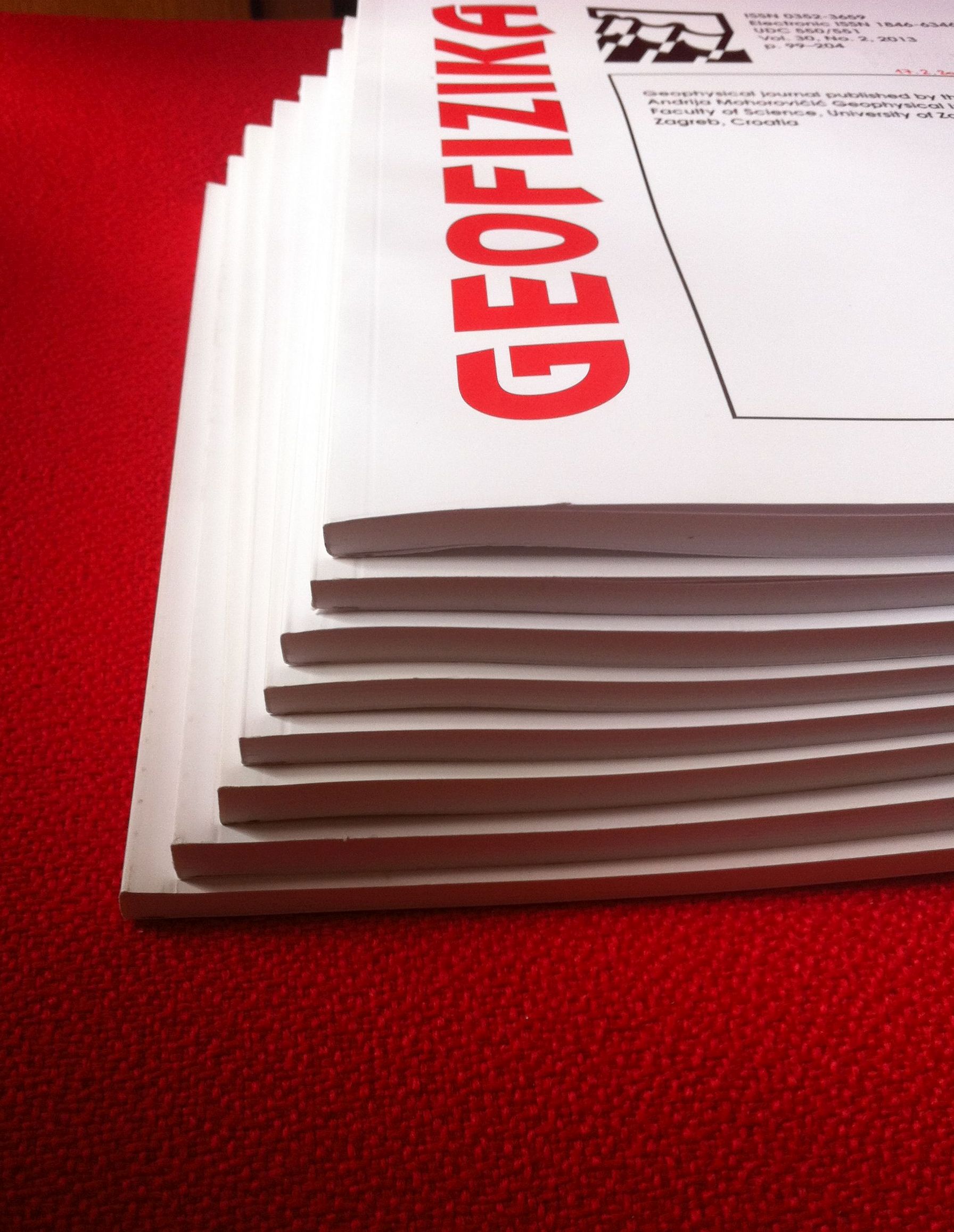Characteristics of the 2025 Santorini-Amorgos seismic swarm
DOI:
https://doi.org/10.15233/gfz.2025.42.6Keywords:
seismic swarm, Santorini-Amorgos, b-value, fractal dimension, rupture scaling, fluid–fault interaction, earthquake migrationAbstract
This study investigates the spatiotemporal evolution and scaling characteristics of the 2025 seismic swarm in the Santorini–Amorgos region, one of the most seismically and volcanically active zones in the Aegean arc. Using a high-resolution earthquake catalog including 1,601 events (ML ≥ 2.9), we analyze variations in key statistical parameters—including b-value, fractal dimension (Dc), scaling exponent (αb), and the q-parameter—within cumulative time windows. Our findings reveal a marked decrease in b-value and simultaneous increase in Dc during the swarm’s activation phase, consistent with an inverse energy cascade and progressive rupture. The spatial extent of the seismic swarm (L) contracts significantly before expanding during the decay phase, and vertical migration of the seismic barycenter suggests a fluid-triggered nucleation process. 3D visualizations confirm fault-aligned clustering and upward migration patterns, supporting a hybrid rupture mechanism governed by both tectonic faulting and fluid diffusion. These results provide critical insights into the complex dynamics of swarms in extensional volcanic environments and highlight the relevance of fractal and scaling analysis for short-term seismic hazard assessment.
Downloads
Published
Issue
Section
License
Copyright (c) 2025 G e o f i z i k a

This work is licensed under a Creative Commons Attribution-NonCommercial 4.0 International License.

